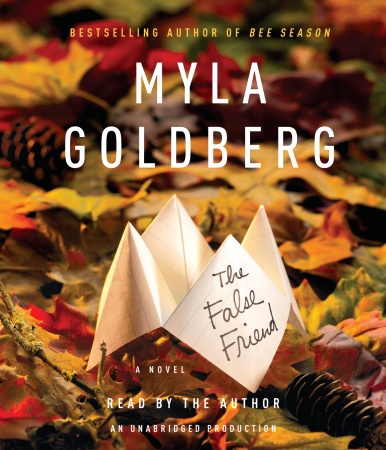My review of Nick Flynn’s beautiful memoir, The Ticking Is the Bomb, appeared in The Rumpus. Here is the link:
The False Friend by Myla Goldberg

The False Friend by Myla Goldberg. New York: Doubleday, 2010. Review by Sharon Harrigan
I can usually get an idea of a book’s potential to go viral by talking to a friend who is in a book group of highly educated and unapologetic suburban stay-at-home moms. When I told her the premise of The False Friend, she said, “My book group would love it. It sounds like Margaret Atwood’s The Cat’s Eye. Did we have a big discussion about that one!” Both books are about a woman looking back on her experiences with mean-girl pre-pubescent bullies. Almost every female reader in America probably has a visceral response to this subject, in reaction to her own experiences, those of her daughters, or both. What makes The False Friend so original is that it is told from the point of view of the bully, although we don’t know (nor does the character remember) how much she was a bully until the end.
The book does a masterful job of conveying the interior life of the characters by having them notice and comment on everything they encounter. For example, when Celia goes to the library to do research, she notices that the librarian’s “smile, both eager and apologetic, was what passed for civic pride.” When she talks on the phone, she notices that her movements are circumscribed, with the motor memory of a time when phones had cords and kept the talker’s movements within their range. We are always inside Celia’s head, and every moment has meaning.
The False Friend, weighing in at a slight 253 pages, is a model of efficiency—a quality that almost all novels could emulate. I was blown away by the pointedness with which the book answers the question: Why tell this story now?
Celia launches an urgent quest to reveal the truth about an event that happened 21 years ago, when her best friend died. The reader needs to know why the opening of the story, when Celia is 32, is the moment to find out about something that happened when she was 11. Goldberg makes it seem both inevitable and plausible, right from the beginning.
The whole premise is set up in no more than 4 1/2 pages (the short first chapter). Actually, almost everything is in the first two sentences: “The sight of a vintage red VW bug dredged Djuna Pearson from memory. ‘Ladybug,’ Djuna said into Celia’s ear as casually as ever, as if this were not the first time that voice had been heard in twenty-one years.”
In the final paragraphs of the chapter, Celia enters her office, her co-workers can tell she is upset, and they ask her what’s wrong. The chapter ends, “My best friend is dead.” Of course, her co-workers misunderstand and think the death has just occurred and advise her to take some time off, which allows her to board a plane to Jensenville, the site of the action for the rest of the book. But their inference isn’t so far off: For Celia, and for the readers, Djuna’s death, because of the way the first chapter is written, has the immediacy of an accident that just happened before our eyes.
The book is also efficient about the way it uses details to sketch a character’s personality, such as Celia’s father: “Hand clasping the steering wheel like a favorite dance partner, Warren was assured without being aggressive, could converse without missing a turn. He once described his weekly six-hour commute to court Noreen . . . as one of the happiest times in his life. Celia understood precisely how that could be true.”
I love the way cars are used as shorthand, that personalities can be classified into two types: those who love to drive and those who hate it. Celia loves her lone road trips, can fix cars (unlike her boyfriend Huck), is a numbers person, likes to make everything orderly and be in control.
The book also does a seamless and efficient job conveying a setting that is both specific (Jensenville, a fictional upstate New York town falling apart after the downsizing of industry) and quirky (former rubber boot capital of the country). I love the beginning of Chapter 3: “When Jensens were still made in Jensenville and America’s rubber boot capital seemed as firmly rooted as a sycamore, the town built a stone arch on both sides with the words Let It Rain. After the factories had moved south and trains started skipping the local station, the arch remained, spanning the road like a tombstone.” The former glory of the town echoes the former glory of Celia, before she was stunted by Djuna’s death.
My prediction is that The False Friend will be the season’s next hit. It’s a short, fast read that quickly puts us on an urgent mission. There is mystery and suspense; an intimate and inviting tone that puts us in the heroine’s head and keeps us there; a timely and quirkily post-industrial city as setting; a sharp-eyed narrator who has an opinion and observation about everything; and a window into the unreliability of memory and the possibility that we could have been both worse and better than we think we were as children.
- « Previous Page
- 1
- …
- 11
- 12
- 13